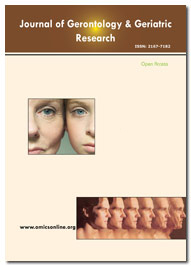Indiziert in
- Öffnen Sie das J-Tor
- Genamics JournalSeek
- SafetyLit
- RefSeek
- Hamdard-Universität
- EBSCO AZ
- OCLC – WorldCat
- Publons
- Genfer Stiftung für medizinische Ausbildung und Forschung
- Euro-Pub
- Google Scholar
Nützliche Links
Teile diese Seite
Zeitschriftenflyer

Open-Access-Zeitschriften
- Allgemeine Wissenschaft
- Biochemie
- Bioinformatik und Systembiologie
- Chemie
- Genetik und Molekularbiologie
- Immunologie und Mikrobiologie
- Klinische Wissenschaften
- Krankenpflege und Gesundheitsfürsorge
- Landwirtschaft und Aquakultur
- Lebensmittel & Ernährung
- Maschinenbau
- Materialwissenschaften
- Medizinische Wissenschaften
- Neurowissenschaften und Psychologie
- Pharmazeutische Wissenschaften
- Umweltwissenschaften
- Veterinärwissenschaften
- Wirtschaft & Management
Abstrakt
Utilizing Change Theory to Implement a Quality Improvement, Evidence based Fall Prevention Model in Long-term Care
Cassandra Warner Frieson, Dorothy Gargis Foote, Karen H. Frith and John H. Wagner III
In order to maintain safety and increase the quality of life for Long Term Care (LTC) residents, fall prevention is a primary concern. Although there is conflicting evidence regarding the effectiveness of fall prevention strategies in LTC, there are evidence-based strategies that can be implemented to decrease fall rates. In order for these strategies to be effective, a behavioral change must occur from an organizational standpoint that includes key stakeholders such as administration, staff, residents, and their families. The authors sought to test the hypothesis, if a Change Theory Fall Model (CTFM) was implemented at the LTC facility, then behavioral changes will occur among key stakeholders to decrease fall rates in residents. The CTFM is an evidence-based fall prevention model developed by an Advanced Practice Nurse (APN) that incorporated Kotter and Cohen’s Change Theory (2002). The CTFM was tested for its effectiveness in a non-profit, 119-bed nursing home, located in northern Alabama during January through December, 2011. Fall outcome measures for 2010 were compared with 2011. Although results did not reveal a decrease in fall rates for the specified time period, stakeholders did learn about Evidence Based Practice (EBP). Factors influencing fall rate outcomes included a high staff turn-over rate. Evaluation of the CTFM remains ongoing, and reeducation and data collection remain critical elements for success.